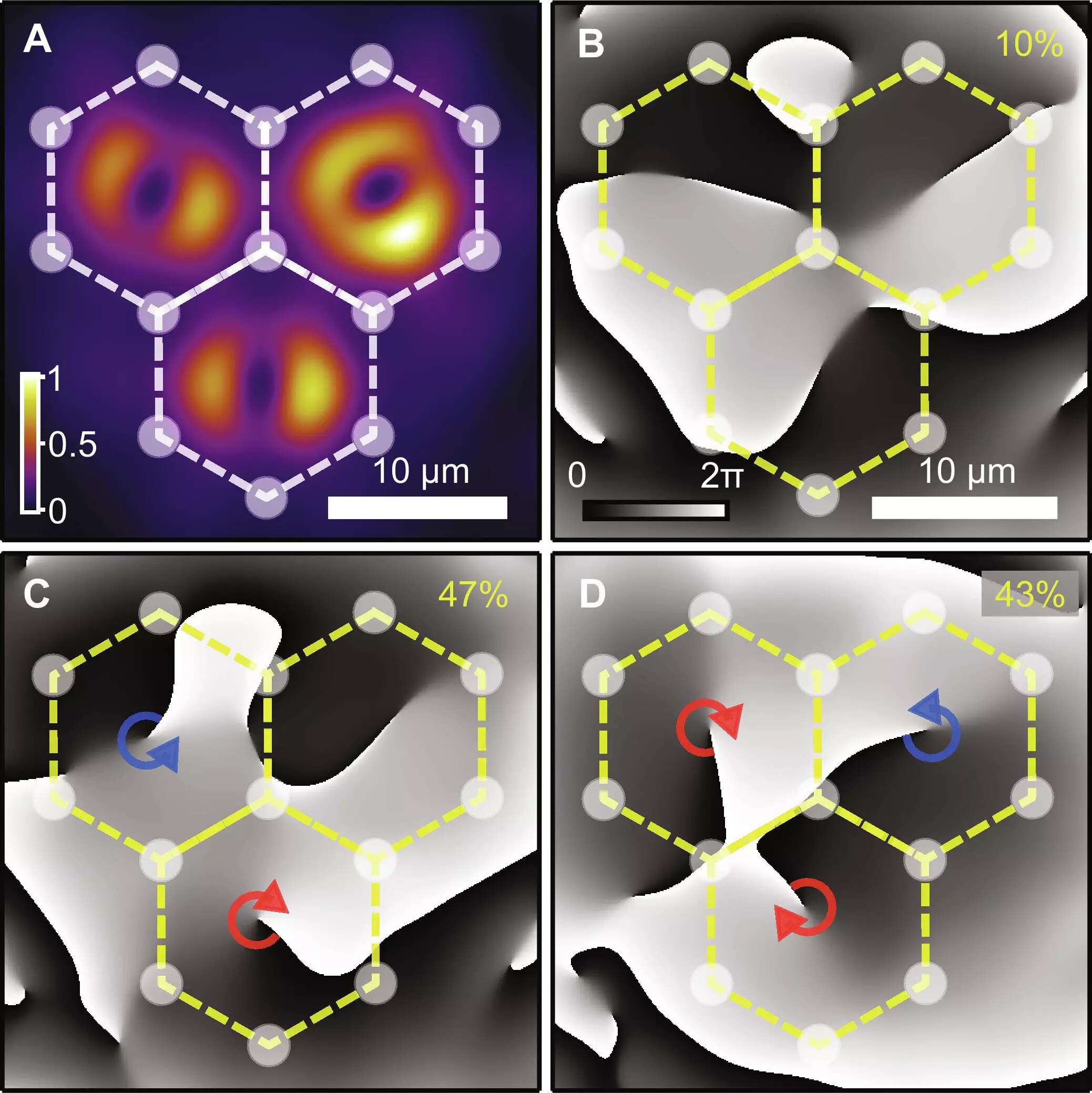A recent study conducted by researchers from Skoltech, Universitat Politècnica de València, Institute of Spectroscopy of RAS, University of Warsaw, and University of Iceland has shed light on the spontaneous formation and synchronization of multiple quantum vortices in optically excited semiconductor microcavities. This groundbreaking discovery opens up new possibilities for studying and simulating condensed matter systems using artificial lattices made up of coupled polariton vortices.
The experiments were carried out at Skoltech’s Photonics Center’s Hybrid Photonics Laboratory, under the leadership of Professor Pavlos Lagoudakis. The researchers utilized a semiconductor planar microcavity, consisting of highly reflective mirrors and InGaAs quantum wells sandwiched in between. By optically exciting the microcavity sample with a patterned laser beam using spatial light modulation techniques, the researchers were able to create a triangular lattice with 22 cells, each containing trapped polariton condensates with single-charge vortices.
Upon studying the behavior of the polariton quantum vortices within the lattice, the researchers observed an interesting phenomenon – neighboring cells tended to have vortices with opposite topological vortex charges, indicating antiferromagnetic coupling. This unique characteristic in the formation of quantum vortices highlights the complex interactions that occur within these systems and provides insights into their emergent behavior.
Theoretical analysis conducted by Dr. Helgi Sigurðsson from the University of Warsaw revealed that the observed orbital angular momentum of the vortices in the lattice correlated significantly with the low-energy configurations of the Ising spin Hamiltonian. This finding suggests that the quantum vortices exhibit extended antiferromagnetic order within the triangular lattice structure, showcasing a form of synchronized behavior akin to classical spin systems.
The synchronization of quantum vortices in semiconductor microcavities represents a significant advancement in the field of condensed matter physics. By harnessing the unique properties of polariton condensates and optical excitation techniques, researchers have been able to observe the formation of stable vortex-antivortex pairs in lattices, paving the way for further exploration into the emergent phenomena of quantum systems. This study not only contributes to our understanding of quantum dynamics but also opens up new avenues for the development of novel quantum technologies based on controlled vortex interactions.


Leave a Reply